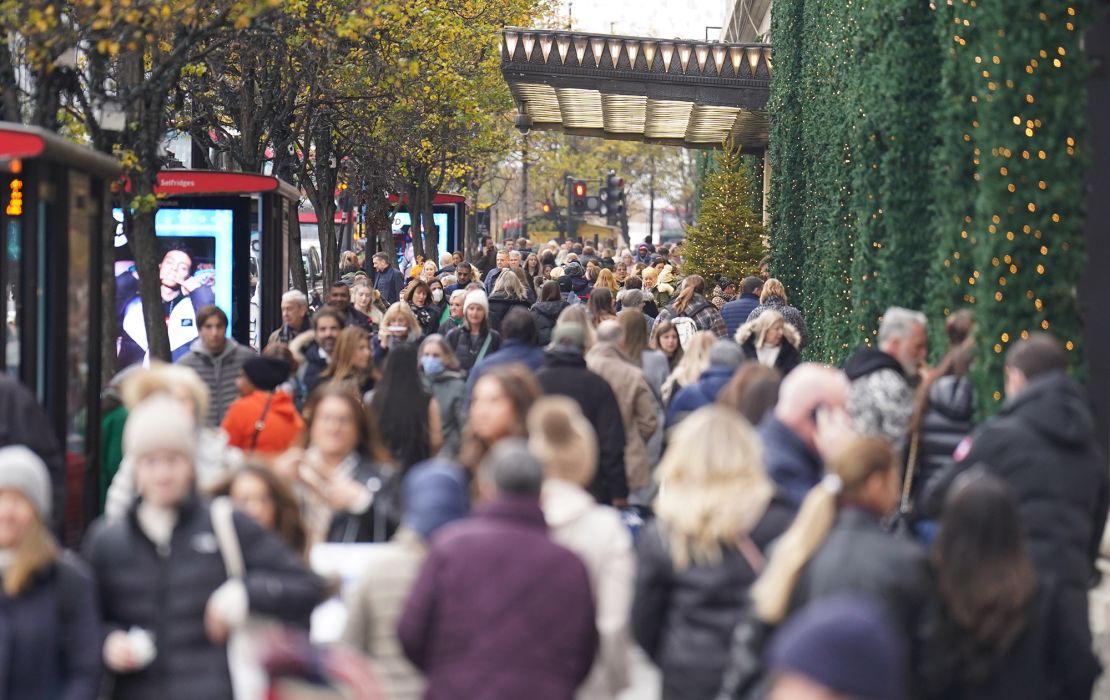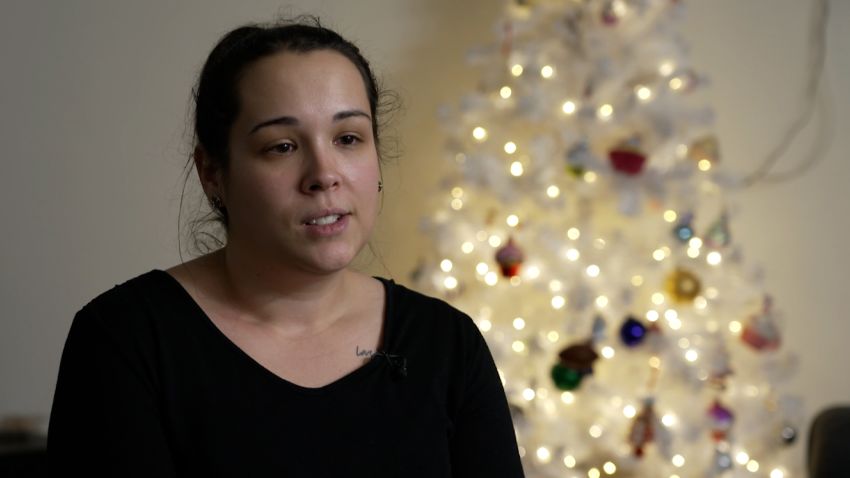For the first time in decades, people in Europe and North America have been forced to contend with the harsh consequences of rapid inflation. That’s meant higher grocery bills, wages that don’t stretch as far and savings that lose value. For some, it’s meant choosing between heating their homes and putting food on the table.
In those major developed economies, there are signs of relief. Prices are still rising, but at a slower clip, as aggressive interest rate hikes dampen activity. Energy prices are pulling back because of fears of a global recession, and the price to ship a container across the ocean has plummeted. These factors are easing inflationary pressures.
In the United States, consumer prices rose at an annual rate of 7.1% in November, the smallest increase since December 2021. Prices rose by 10.7% in the United Kingdom last month, down from 11.1% in October, according to data published Wednesday.
But even if this bout of inflation has peaked, economists are warning the world may not return to simpler days when prices barely rose at all. Actually keeping inflation near 2% — the target of central banks from the US Federal Reserve to European Central Bank and Bank of England — won’t be easy.
Aging populations, the climate crisis, the green energy transition and a shift from global supply chains toward more local production could nudge up prices for years to come. That could mean policymakers have to keep interest rates higher.
“The decade after the financial crisis, they were fighting hard to get inflation up,” said Mark Zandi, chief economist of Moody’s Analytics. “In the coming decade, they’re going to be fighting hard to get inflation down.”
The inflation problem
Across the 38 member countries of the Organization for Economic Cooperation and Development, which represents most major economies, annual inflation is expected to drop from 9.4% in 2022 to 6.5% next year and 5.1% in 2024.
The fading impact of the pandemic and lower oil prices are partly responsible for the fall, but it mostly comes down to an unprecedented campaign by central banks to guide inflation back down.
In recent months, they’ve been raising borrowing costs at a rapid clip in a bid to slow demand, sending a chill through the economy. A lot of uncertainty remains: Central banks aren’t exactly sure how high they need to raise rates — and how long they need to keep them there — in order to get inflation near 2%. But they do expect the effort to pay off eventually.
“It will take a couple of years before inflation returns to the Fed’s 2% goal,” Cleveland Federal Reserve President Loretta Mester said in October. “But I do expect to see meaningful progress over the next year.”
However, the final percentage point or so of excess inflation could prove especially difficult to eradicate. As inflation falls and the economic costs of higher rates become clearer in rising jobless numbers, central banks will face calls to ease up. Inflation at 3% may start to look more palatable if unemployment is painfully high.
“I suspect that when, in 2023 or 2024, inflation is back down to 3%, there will be an intense debate about whether it is worth getting it down to 2% if it comes at the cost of a further substantial slowdown in activity,” Olivier Blanchard, former chief economist of the International Monetary Fund, wrote in a recent column in the Financial Times.
Aging, climate and deglobalization
Battling inflation in the near-term is one thing. But there are also broader trends reshaping politics, society and the economy that could prop up prices, including demographic changes, the effort to replace fossil fuels with clean energy and deglobalization.
“Inflation could hit 2%, but is it going to stay there?” said Manoj Pradhan, founder of Talking Head Macroeconomics. “All these risks become structural stories that I think pave the path for inflation to remain higher than it used to be.”
In North America and Europe, almost one out of every five people is currently aged 65 and older, according to the United Nations. That proportion could rise to one out of every four people by 2050. That means spending will need to rise on services like health care and pension payouts, according to Pradhan, who has published research on this issue.
At the same time, the labor force is expected to shrink in many advanced economies — a dynamic already showing up in the aftermath of the pandemic. Early retirements and long-term illness have reduced workforce participation in countries like the United States and the United Kingdom. Collectively, this will generate more debt and stoke prices.

“You’re not going to be having the same flow into the labor market as you once did,” said Randall Kroszner, who served as a Federal Reserve governor between 2006 to 2009. “That I see as one of the biggest challenges.”
The consequences of global warming — and the essential task of weaning the world off oil, gas and coal — also need to be considered. In a speech earlier this year, ECB policymaker Isabel Schnabel laid out three risks.
The first, which she dubbed “climateflation,” refers to the actual costs of climate change, as extreme weather and more intense and frequent natural disasters disrupt food production and housing. The second, “fossilflation,” is the “legacy” cost of dependence on fossil fuels, which exposes the world to spikes in energy prices due to events such as Russia’s war in Ukraine.
Then there’s “greenflation,” driven by soaring demand for renewable energy and products like electric vehicles. At least for now, supply of critical minerals can’t keep up, which could force prices higher at times.
Additionally, the pandemic and war in Ukraine have accelerated efforts to rework supply chains so products are made closer to customers, especially for sensitive technologies — a huge change from how companies thought about manufacturing over the past three decades.
Geopolitical instability is prompting global firms to reduce their dependence on China, which benefited from an export boom in the early 2000s as businesses sought to capitalize on abundant and cheap labor there.
“Deglobalization creates an unambiguous upside risk to inflation,” Pradhan said, noting that while it may boost economic output in countries like the United States, higher costs will need to be passed on somewhere.
It’s not clear how much inflation these factors will generate. It could be less than one percentage point, or it could be more, depending which economist you ask. But there’s consensus it could make inflation stickier, and thus harder to manage.
“It is possible that longer-term changes — such as those associated with labor supply, deglobalization and climate change — could reduce the elasticity of supply and increase inflation volatility into the future,” Fed Vice Chair Lael Brainard acknowledged in a speech last month.
A new target?
A tough question follows: If 2% inflation is going to be harder to come by, does it make sense for central banks to keep it as a target, encouraging them to stick with higher interest rates as a result?
This isn’t a matter central banks are eager to discuss now. It would have been one thing to raise the target when inflation wasn’t an issue — but to do so in this moment could send a message that central banks aren’t in the driver’s seat. That’s dangerous given their credibility is key to taming inflation expectations.
“It would make it harder to get inflation back under control, [and] it would weaken economic growth due to greater uncertainty over long-run inflation,” said Michael Saunders, a former Bank of England official. “I want to emphasize, it would be a really bad idea.”
But Blanchard, a longtime proponent of a higher target, thinks advanced economies should consider a 3% inflation goal, taking some of the pressure off central bankers.
While there are concerns that raising the target could push workers to keep asking for wage increases, research shows that people only start paying attention when inflation rises above the 3% to 4% range, he noted.
Former Fed governor Kroszner thinks it would be “problematic” to adjust the target in the current climate, though he said it’s “something central banks should always be thinking about.”
“The 2% target which most countries’ central banks have picked is arbitrary,” he added.





















